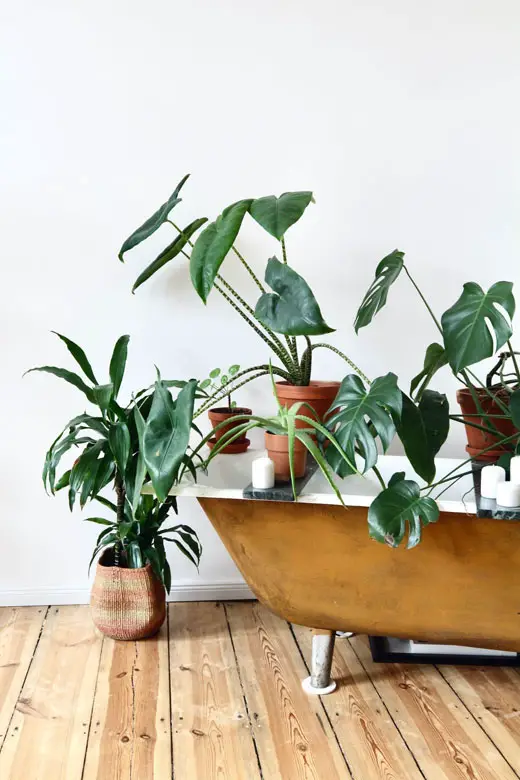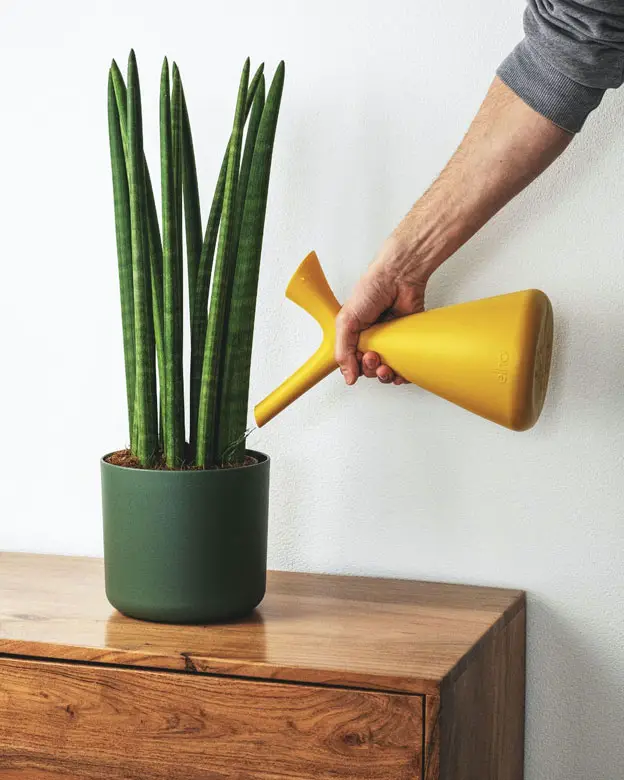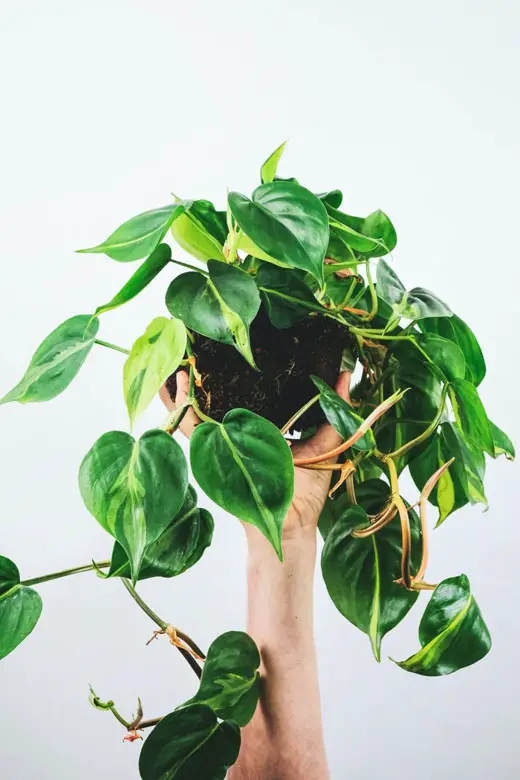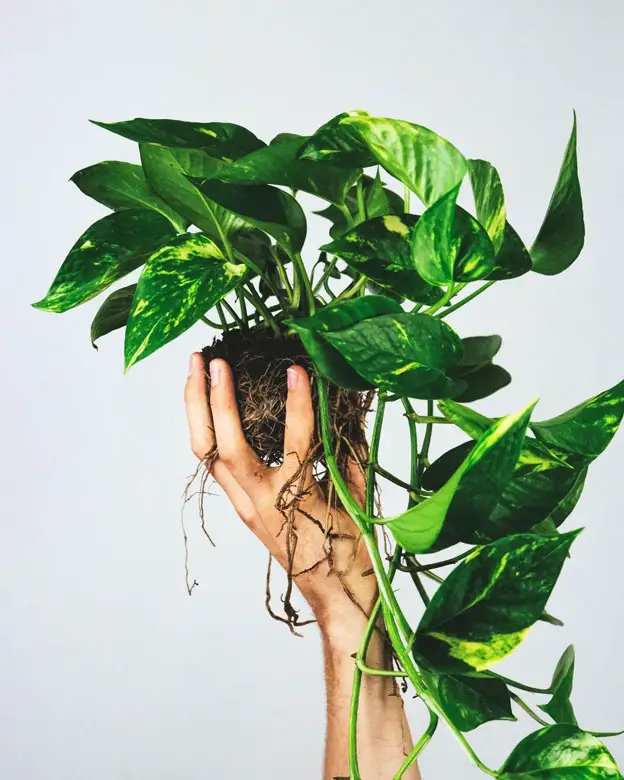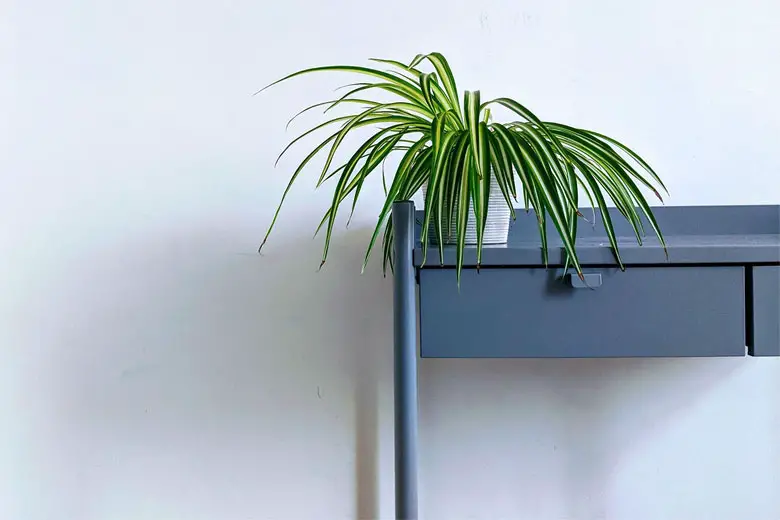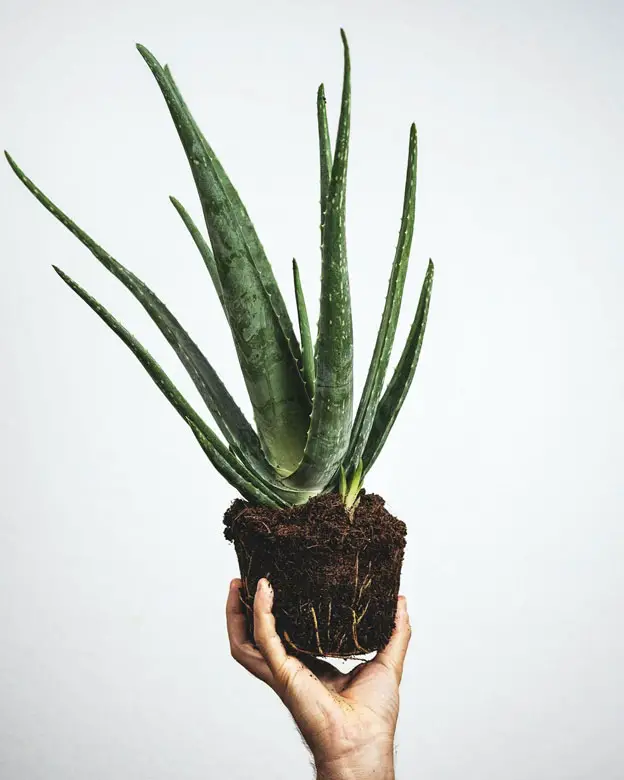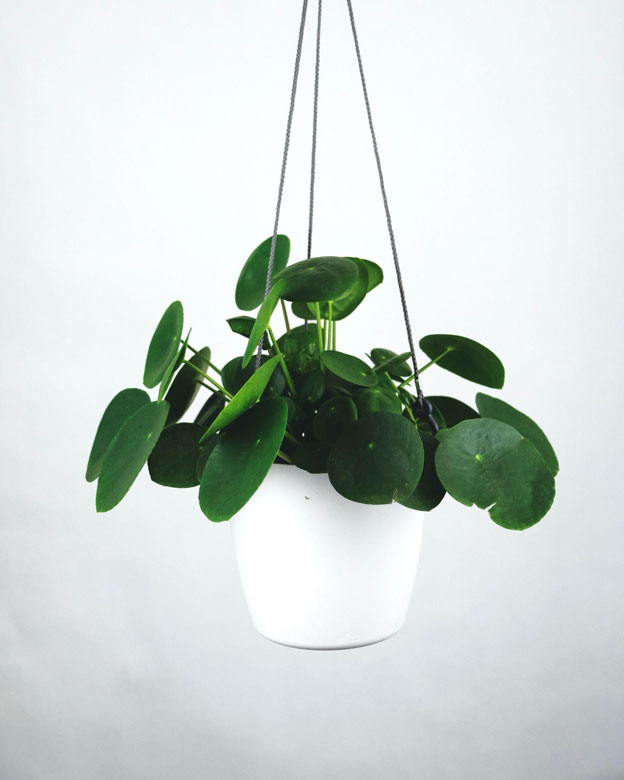In this article, we will explore the top indoor plants that produce the most oxygen that can help freshen the air in your home, as well as better understand why they’re so beneficial to our overall well-being. Introducing plants into your living space not only adds a touch of natural beauty but can also significantly contribute to an improvement in indoor air quality. While plants release oxygen as a byproduct of photosynthesis during the day, some houseplants are more efficient in oxygen production than others. I’ll also share some of my personal favorite indoor plants, and how to care for them.
The Importance of Oxygen For Your Health
One of the keys to staying healthy is oxygen levels. If you or a loved one have ever been in the hospital (who hasn’t!) you’ve probably heard the nurses talk about “pulse ox”; or a measure of the oxygen saturation in your bloodstream. If your oxygen saturation is low, this is why supplemental oxygen is sometimes recommended. Also, even in yoga you’ll hear the instructor talking about breath work. “Take deep breaths in, and let them out slowly” is one of the things that is taught, as well as when you breathe in, your abdomen should go out, not in, to allow your lungs to fill more completely.
Some interesting studies on oxygen have found the following:
- As blood oxygen concentration increased in people, their heart rate decreased and their response time improved. You need higher levels of oxygen for better cognitive functioning. (Neural Regeneration Research, 2013)
- Our cells sense oxygen levels and modulate their biochemical pathways based on the amount of oxygen. For example, the T cells for immunity have a distinct relationship with oxygen and modulate their function in response to environmental oxygen levels. (University of Oklahoma Health Sciences Health Center, Frontiers in Immunology, 2017)
- Many people with COVID-19 were found to have low levels of oxygen in their blood (<95% in their blood). When oxygen levels are low, this could be an indication that medical care is needed. Pulse oximeters may be used to monitor them. (Minnesota Department of Health)
Since it’s possible for us to have lower than optimal levels of oxygen in our body, the question becomes how to raise these levels – and do it without needing oxygen tanks!One of the most overlooked ways to increase oxygen levels within the home is with the use of houseplants! In fact, due to a very well-known NASA study, it’s already known which plants produce the most oxygen. So, all you have to do is read through the list below and then pick the ones that sound like they’ll work the best for your space.
The Famous NASA Study of Plants That Increase Oxygen Levels
In 1989, a famous NASA study was done with the Associated Landscape Contractors of America on air purification in sealed environments. The study tested plants for the removal of benzene, formaldehyde, trichloroethylene, xylene, and ammonia. NASA was concerned with the space stations but the information that was learned is applicable to our own homes, which often are made to be sealed tight indoors, and contain a lot of indoor volatile organic pollutants that are considered toxins in the air.
NASA’s research revealed that plants can play a crucial role in maintaining a healthy and breathable atmosphere. Through the process of photosynthesis, plants absorb carbon dioxide and release oxygen, making them valuable contributors to oxygen production. Notably, the study highlighted the importance of houseplants in combating the “Sick Building Syndrome,” a term used to describe health issues caused by poor indoor air quality.
What is Required of Me to Get Those Same Benefits in My Own Home?
If you or a loved one could benefit from improved immunity, cognitive functioning, and cellular health via an increase in oxygen levels, it may be time to consider introducing some houseplants. The best place to start is by bringing these plants into our homes, and then watering and feeding them as needed. By doing so, we end up improving the health of all those who live in the home. The plants purify the air of toxins, leaving us cleaner air to breathe and making oxygen more available to us. Here are some of my absolute favorites:
The Top Ten Plants That Produce The Most Oxygen Indoors
1. Snake Plant
- Plant Facts: This plant can grow to a few feet in height, and it comes in different patterns, colors, and dwarf forms.
- Toxins Removed from the Air: Formaldehyde (used in making toilet paper, bathroom cleaning products)
- Added Benefit: Produces oxygen day and night. Can reduce ozone levels.
- How the Plant Stays Healthy: Can grow in bright or low light. Easy to grow and will manage without water for a few weeks if you forget.
- Home Idea: Great in a corner in a home office or dining room to add some low-maintenance greenery.
2. Peace Lily
- Plant Facts: Indoor peace lilies have been known to live for 20+ years!
- Toxins Removed from the Air: Trichloroethylene, ammonia, acetone fumes from furniture and paint.
- Added Benefit: Beautiful, easy to grow, plus a nice aroma from long-lasting white flowers.
- How the Plant Stays Healthy: Likes to be moist all the time. Tells you when it needs water by leaves wilting. Grows in low light or bright light.
- Home Idea: Toxic to cats, dogs, and children so keep out of reach. Place in a bathroom or kitchen window where it will thrive in its humid environment.
3. Philodendron
- Plant Fact: Very low-maintenance climbing and/or hanging plant with beautiful foliage.
- Toxins Removed from the Air: Formaldehyde
- Added Benefit: These can be purchased when small, as they grow extremely quickly and won’t take long to fill out and adapt to their new space.
- How the Plant Stays Healthy: Prefers bright, indirect light. These plants are prone to root rot from not drying out completely between waterings, therefore bottom watering is recommended.
- Home Idea: Philodendrons are excellent on bookcases or shelves where they can freely trail and climb as they grow.
4. Ferns
- Plants Facts: Humans have used these plants for food, medicine, fertilizer, and decoration for centuries. They’re a popular choice as they can thrive in places where many other plants won’t do well.
- Toxins Removed from the Air: Xylene and formaldehyde. Boston fern targets mold.
- Added Benefit: Ferns play an important role in stabilizing soil and preventing erosion.
- How the Plant Stays Healthy: Can be misted in dry winter months. Loves low light and will burn in direct sun. Keep soil moist at all times. Forget to water and their leaf tips will turn brown.
- Home Idea: Ideal for bathrooms where it’s humid, as these plants need a high-humidity environment to thrive.
5. Palms
- Plant Fact: There are over 2,500 species of palm trees and they can be traced back over 5000 years to Mesopotamian times.
- Toxins Removed from the Air: Formaldehyde, xylene, and toluene.
- Added Benefit: Palms are highly regarded in the practice of feng shui, as they’re thought to help dispel negative energy and attract positive energy.
- How the Plant Stays Healthy: Loves humidity and bright indirect light. Lady Palm does well with low light. Misting them is great. Brown tips mean not enough water and low humidity.
- Home Idea: Lady Palm and Eureka Palm may work well in hallways or bedrooms.
6. Pothos
- Plant Fact: A good starter plant as it’s easy to care for and grows quickly. It can be trained to hang or not.
- Toxins Removed from the Air: Formaldehyde, xylene, carbon monoxide, benzene
- Added Benefit: Known to increase humidity in the home. Also said to help alleviate eye strain and irritation from screen exposure.
- How the Plant Stays Healthy: This plant doesn’t need much. It thrives on neglect and is weed-like in its ability to adapt and grow in almost all conditions.
- Home Idea: Pothos are great to place above cabinets or on shelves in any living space, as they’re known to help bring fresh energy to stale spaces.
7. Money Plant
- Plant Fact: This plant is considered the epitome of abundance and good luck. It is renowned for bringing abundance into one’s life and multiplying wealth.
- Toxins Removed from the Air: Benzene, formaldehyde, xylene, and toluene
- Added Benefit: Widely known to release your stress, quiet your mind, and reduce your anxiety.
- How the Plant Stays Healthy: Must completely dry out between waterings to remain in optimal health. Needs minimal care (water every few weeks) and well-draining soil to keep it happiest.
- Home Idea: Great in a living room, office, or dining room type of environment.
8. Spider Plant
- Plant Fact: Very easy to grow. Considered therapeutic, and thought to help in removing anger, tension, and depression from the home.
- Toxins Removed from the Air: Formaldehyde, benzene, carbon monoxide, and xylene.
- Added Benefit: You can eat the leaves. Completely non-toxic for cats, dogs, and children.
- How the Plant Stays Healthy: Can dry out between waterings. Brown tips on this plant mean low humidity, underwatering, and excess salt in the water.
- Home Idea: Adds a grassy feel to the home and tends to do really well in a window sill or area with bright, indirect light.
9. Chinese Evergreen
- Plant Fact: One of the most durable houseplants, known to tolerate drought, neglect, low light, and dry air from air conditioning.
- Toxins Removed from the Air: Formaldehyde. Benzene, carbon monoxide, trichloroethylene and more.
- Added Benefits: Thought to bring good fortune and prosperity, therefore it is often used to cleanse the energy of a room.
- How the Plant Stays Healthy: Very forgiving of watering neglect. Too much water causes rot. Likes to completely dry out from time to time.
- Home Idea: Great if you don’t have lots of windows, although toxic to dogs.
10. Aloe Vera
- Plant Fact: Produces oxygen 24/7, has multiple known healing benefits, and has been used in wound care for an estimated 6000+ years.
- Toxins Removed from the Air: Formaldehyde and benzenes
- Added Benefit: Considered to help with digestion, treatment of skin conditions such as acne or psoriasis, sunburn relief, wound healing, heartburn, and blood sugar control.
- How the Plant Stays Healthy: Loves a sunny spot and needs a minimum of six hours of sun per day.
- Home Idea: Widely available in lots of different sizes, making it easy to find and typically fairly inexpensive. Great in a kitchen, bathroom, or anywhere easily accessible when cleaning and caring for wounds.
Additional Oxygen Producing Plants
It’s difficult to narrow this list down to ten varieties, as all plants are uniquely beneficial to our planet (and our homes!) Given that, we’ve decided to add a few more excellent oxygen-producing houseplant options for you.
Rubber Trees
- Plant Fact: Good for those sensitive to pollens as rubber trees don’t pollinate indoors.
- Toxins Removed from the Air: Formaldehyde, carbon dioxide, and carbon monoxide.
- Added Benefit: Rubber Trees can tolerate artificial light and low light conditions, making them an excellent option for windowless areas. They will get leggy if they don’t receive enough sunlight.
- How the Plant Stays Healthy: Hard to kill. Water once a week. Low light.
- Home Idea: Good for a corner or room with low light conditions, however, note this plant is toxic to cats and dogs.
English Ivy
- Plant Fact: Super hardy and low maintenance, and can thrive even in cold conditions.
- Toxins Removed from the Air: Eliminates airborne fecal matter particles. Sucks up secondhand smoke. Eliminates VOCs like benzene, toluene, octane, and trichloroethylene.
- Added Benefit: Can be used topically to treat burns, infection, joint pain, swelling, and nerve pain.
- How the Plant Stays Healthy: Let the soil dry out in between watering, and make sure it’s placed in a location with good air circulation that isn’t too crowded.
- Home Idea: This climbing/trailing plant is great in hanging baskets or on a windowsill. However, this plant can be considered invasive, so you should be cautious where you plant, especially outdoors.
Other favorite oxygen-producing houseplants that I like include the bamboo plant (safe for pets), jade plant (a 24/7 oxygenator), and the Gerbera Daisy.
Ways to Actually Get New Plants into your Home:
In addition to shopping in person at your local nursery or hardware store such as Ace or Lowe’s which all usually carry a selection of indoor plants year-round, there are now online plant delivery options that make it incredibly easy to order house plants to your door.
Our favorite is Bloomscape. We love their huge selection of plants and accessories. And they offer real-time support, making plant parenting easy. Plants come fully grown and potted, straight from their greenhouse. Here’s $30 off your first purchase – because there’s no such thing as too many plants.
FAQs
-
What are the logistics of using oxygen-producing plants within the home?
To reap the full benefits, you’ll need a lot of them. Consider light, humidity, and the rooms you want to decorate with plants. Ideally, you’ll need three plants/100 square feet. Three 18-inch plants or four shoulder-high plants are recommended for each person in the home. It could be argued there can never be too many plants within a space!
-
What difference does leaf size make in oxygen production?
Plants like rubber trees have a large leaf surface that allows them to release a lot of oxygen. The larger the leaf, the bigger the plant, the greater the toxins are pulled in, and the more oxygen that is released.
-
Can plants help reduce allergies?
Certain houseplants can help reduce allergies by filtering airborne allergens and improving air quality. Plants like the Peace Lily, Boston Fern, and Bamboo Palm are known for their ability to remove common allergens such as dust, mold spores, and pet dander from the air.
-
Are there any other benefits to having plants in the home?
Yes. Just having plants in the home beautifies the environment, reducing stress and encouraging calm. They also lend an air of sophistication to your environment as well as a sense of openness and friendliness in the home. Lastly, plants are often associated with vitality and an improved state of mind, lifting the spirit and encouraging feelings of happiness and hopefulness.
ABOUT THE AUTHOR

Dr. Schwontkowski has taught over 1,000 classes on topics such as health, nutrition, diets, weight loss, herbs, detoxification, cooking, memory and accelerated learning, natural healing infection control, supplementation, diabetes, back problems, and overcoming various health challenges. She was also a journalist for health and fitness magazines for 15 years and an editor of a top health magazine in Sacramento for 12 years. She is now a freelance writer and author.


